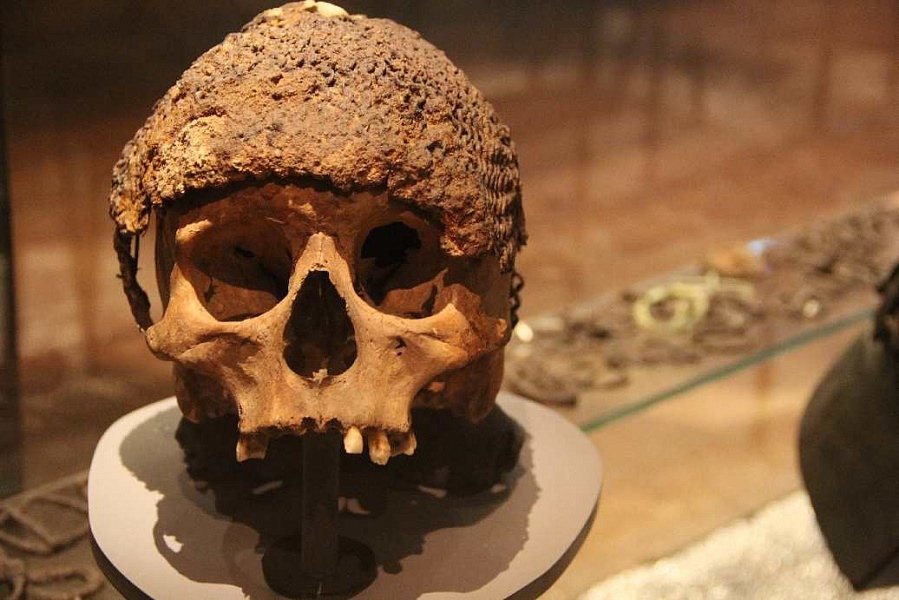
Unveiling a Remarkable Find: Soldier’s Skull Fused with Chainmail Unearthed from the Battle of Visby
On the tranquil island of Gotland, nestled amidst the serene Baltic Sea, lies an evocative relic of a bygone era – a skull adorned with remnants of medieval chainmail. This poignant artifact, unearthed from a mass grave near the town of Visby, whispers tales of a ferocious battle that forever etched its mark on the island’s history.

The Battle of Visby, fought in 1361, was a pivotal clash between the inhabitants of Gotland and the invading Danish forces. This epic struggle, unfolding on the outskirts of Visby, the island’s largest settlement, epitomized the fierce territorial disputes that characterized the medieval period.

The Gotlanders, fiercely defending their homeland, faced a formidable foe in the well-trained and seasoned Danish army. The battle raged for hours, with both sides unleashing a torrent of arrows and engaging in fierce hand-to-hand combat. The clash of steel against steel echoed through the air, accompanied by the cries of the wounded and the dying.
As the sun began to set, casting long shadows across the battlefield, the Danish forces emerged victorious. The Gotlanders, outnumbered and outmatched, suffered heavy casualties. The mass grave from which the chainmail skull was unearthed serves as a stark reminder of the brutal toll this battle exacted.

The recovered chainmail, painstakingly pieced together by archaeologists, offers a glimpse into the armament of the Gotlandic warriors. Its intricate weave and sturdy construction attest to the skill of the medieval blacksmiths who crafted it. The chainmail, once a symbol of protection and resilience, now serves as a haunting reminder of the fallen warriors who once donned it.
The skull, though devoid of its former life, bears the indelible marks of battle. The telltale fractures and dents suggest the impact of a weapon, a stark reminder of the violence that engulfed the battlefield. Yet, amidst the vestiges of war, the skull also evokes a sense of humanity, a poignant reminder of the individual lives lost in the struggle for survival.

The Battle of Visby and the chainmail skull transcend mere historical curiosity. They serve as powerful symbols of the human capacity for both destruction and resilience. They remind us of the fragility of peace and the enduring




